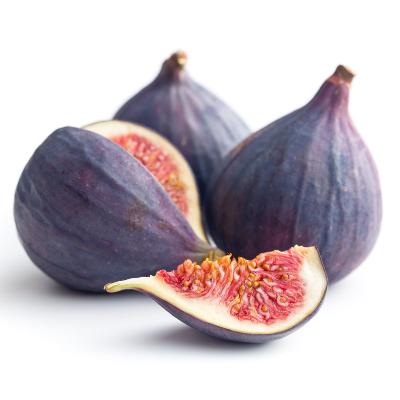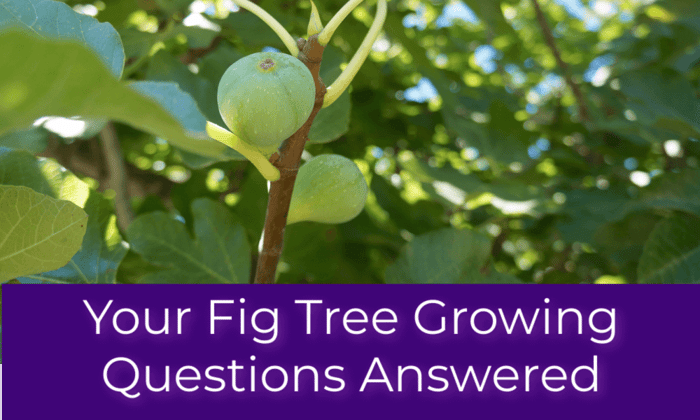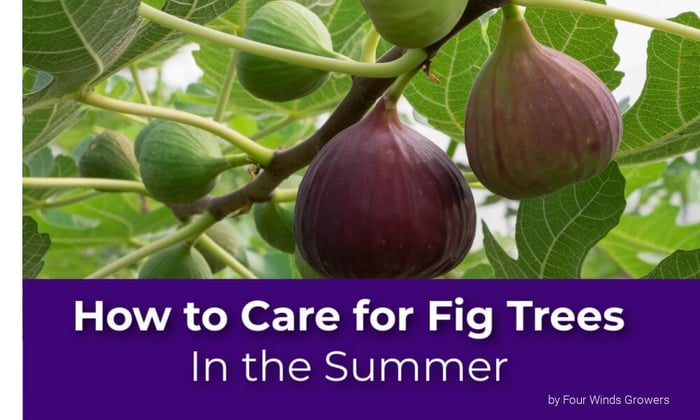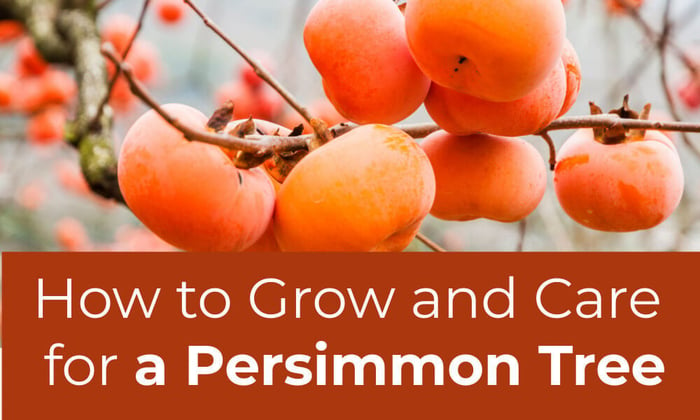Table of Contents
Your Fig Tree Growing Questions Answered
A Brief History of the Fig Tree
Fig trees are believed to be one of the first plants propagated and farmed in the middle east. Due to their vigorous growth and easy propagation, fig tree growing became a popular over time and new varieties were introduced to Spain, Portugal, Morocco, Turkey, Greece and France. There are currently over 700 varieties of figs in the world.
In the 1500’s, Spanish missionaries introduced fig trees to America and planted them also the West Coast of California and Mexico. By the 1800’s, a commercial industry was born.
Fig trees are one of the easiest fruit trees to grow, and a great choice for a beginner fruit tree grower. They are deciduous, meaning that they go dormant during the winter months and start to bud again in the spring. Regular weekly watering, seasonal pruning and a fertilizing in the spring and early fall will make caring for your fig tree a simple task.
Here are some Frequently Asked Questions About Fig Tree Growing:
First, What exactly is a fig tree?
Fig trees are deciduous trees or large shrubs in the Mulberry family that originated in the Mediterranean and Western Asia. Fig trees have smooth white bark, fragrant lobed leaves and produce delicious fleshy false fruit which are technically called syconium. These syconia, best known as figs, are fleshy cup-like structures lined with numerous tiny flowers that form an incredibly sweet and flavorful pulp when ripened on the tree. They are also one of the fastest growing fruit trees in our line up and produce fruit as early as their second season.
Fig trees are easy to grow! The fruit can be enjoyed fresh, used for cooking and baking, eaten whole with the skin or peeled. Figs are low maintenance and drought tolerant once they get established. They adapt to a wide range of climates and soil types and are great in containers.
How big do fig trees get?
Unpruned fig trees can reach heights from 20’-35’ depending on variety and soil conditions. In general, figs are easy trees to keep small with regular pruning. Figs do exceedingly well in pots and are ideal candidates for espalier pruning. They can even be kept indoors and a houseplant, but they will likely not fruit.
Which fig variety is best for my zone?
The growing zone for figs is uniform across most-all fig tree varieties. The best fig tree growing zone is between 7-9 with some dipping into zone 6. In general you want to keep your tree above 5° F. The most winter hardy varieties we recommend include Brown Turkey, Chicago Hardy and Osborne. If you live in a zone that drops below 5-0°F, you will want to grow in a container that way you can bring the tree inside over winter
Our friends in cold-winter climates have the practice of partially burying their figs with mulch in the winter to protect the fruiting wood and the ground from freezing then uncovering the tree in the spring. Your mileage may vary with this technique, and we recommend contacting your local agricultural extension office to find out what varieties people are growing in your area for best results.
When can I plant fig trees?
Figs are usually planted in the early spring after the danger of frost has passed but can also be planted as early as fall. Like most deciduous trees, it's best to wait for the tree to be dormant before moving or planting. It's ready when the leaves have fallen and sap doesn’t ooze out when you prune.
How or when to fertilize my fig trees?
Fig trees are naturally slow-growing, which means that they do not require regular fertilizing. In fact, fertilizing a fig tree at the wrong time can result in poor tree growth and less fruit. Excessive applications of nitrogen can have a negative effect on fruit quality. Fertilize after the last frost in early spring when you start to notice new growth, or if you notice a lack at nutrients, characterized by yellowing or pale leaves. It is also a good idea to fertilize if your tree is sharing its space with other plants and competing for nutrients. The one exception is for figs grown in containers, which should be fed three or four times a year with a balanced fruit tree fertilizer.
Improper fruit growth can be an indication of improper fertilizing. To properly fertilize your tree, spread the fertilizer over the root zone around the tree, but away 6-12 inches from the base of the tree.
An organic plant food such as 10-10-10 would be ideal for your fig tree. The best time to use it is after the last frost in the early spring when you start to see new growth, and again in the early fall about two months before the first frost. Fertilizing too late in the year could result in growth that will die when the tree goes dormant.
Types of organic plant food include bloodmeal, fish emulsion, alfalfa meal or vermicompost.
Ready to start you fig tree growing adventure? Chaeck out some of our favorite fig varieties. We propagate and grow all of fig trees in-house in their own special greenhouse. We have been fig tree growing for decades and have perfected the process.
Fig trees go dormant in the winter and generally drop all of their leaves during this time. When spring returns, so do fig leaves and fruit in abundance! We do ship our fig trees all year round, and they may or may not have leaves on them, depending upon the season.
Black Mission Fig Tree

$54.00
--OVERVIEW-- Now available in the Premium 36"-48" size! The Black Mission fig is the most popular variety planted in California. Figs taste rich and sweet with a hint of berry flavor. The fruit is delicious when eaten fresh, dried, or… read more
Brown Turkey Fig Tree

$54.00
--OVERVIEW-- Now available in the Premium 36"-48" size! Brown Turkey fig trees can be grown on the coast or inland. They are considered cold hardy. This is a compact tree, so you can prune them to any shape. Self-fruitful… read more
Black Jack Fig Tree

$54.00
--OVERVIEW-- Black Jack Fig trees produce large, purple-brown figs with sweet, juicy, strawberry-red pulp that is similar to the Brown Turkey Fig. This fig tree is naturally small and compact semi-dwarf size, making it a wonderful container plant. Self-fruitful. Considered drought… read more
Panache Fig Tree

$54.00
--OVERVIEW-- Our Best Selling Fig Tree! Panache Fig Trees produce small to medium-sized fruit. The fruit is green with yellow tiger stripes. Panache figs have a strawberry pulp that is blood-red in color with a rich almost berry flavor. Known… read more
Osborne Fig Tree

$54.00
--OVERVIEW-- The Osborne Fig tree is a cold-hardy variety. Osborne fig trees are a long-time favorite in cool coastal areas, and excellent inland as well. The tree grows large fruit with very attractive dark purplish-brown skin, amber pulp. Osborne… read more
Chicago Hardy Fig Tree

$54.00
--OVERVIEW-- Chicago Hardy Fig's late season mahogany to purple fruit are set on current season's growth. Considered one of the most frost hardy of all fig trees. Chicago Hardy has little to no breba crop. The figs have the… read more




